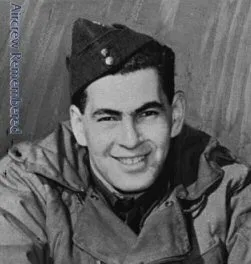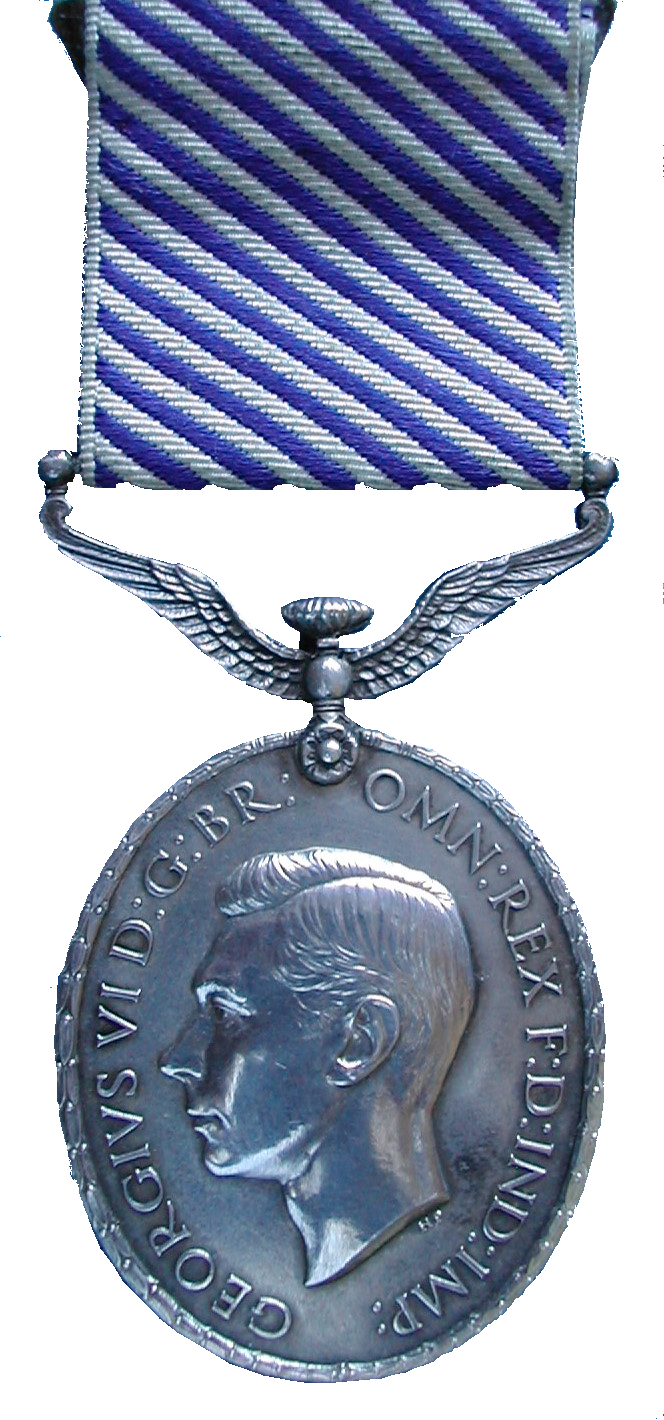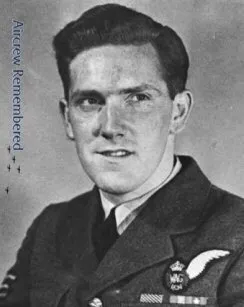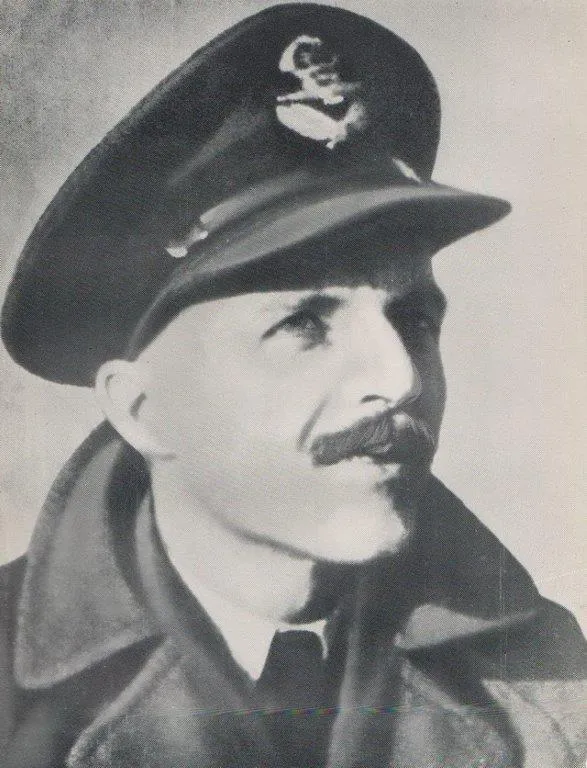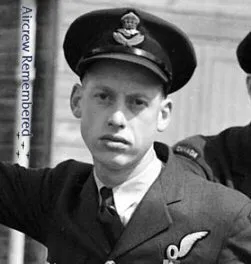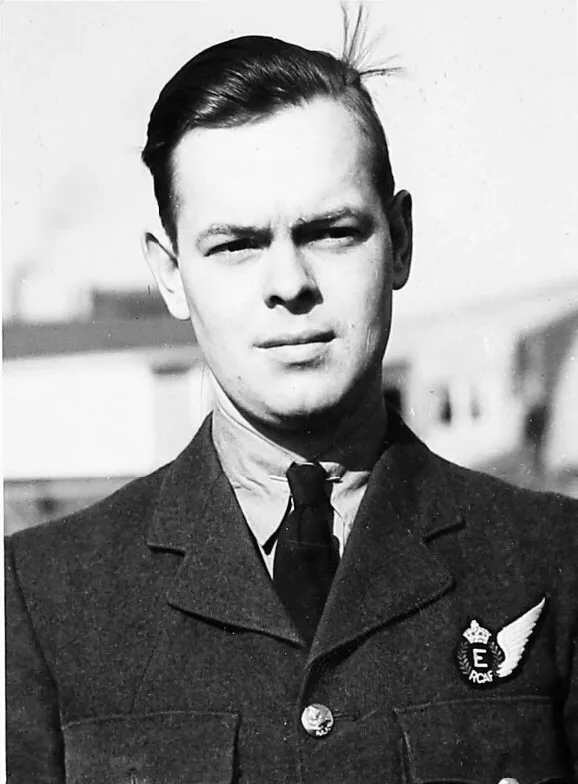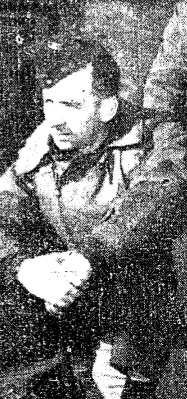Bodnoff, Israel Joseph (Flight Sergeant)
Survived 1944-June-24
Service
RCAF
Unit
162 (BR) Sqn- Squadron
Sectabimur Usque Per Ima We will hunt them even through the lowest deeps
Base
RAF Wick
Rank
Flight Sergeant
Position
Wireless Operator/Air Gunner
Service Numbers
R/180936
Crew or Other Personnel
Canso 9754
Mission
Canso A 9754
Convoy Patrol 1944-June-24 to 1944-June-24
162 (BR) Sqn (RCAF) RAF Wick
162 Bomber Reconnaissance Squadron RCAF (Sectabimur usque per ima) RAF Wick, Scotland. Canso A aircraft 9754 P was about ten hours into an antisubmarine patrol off the coast of Norway when it spotted German submarine U-1225 on the surface. The Canso turned to attack, exchanging gunfire with the U-boat and suffering catastrophic damage, including loss of an engine, in the process of dropping depth charges on and sinking the submarine. The Canso was forced to ditch at sea. The entire crew was able to abandon the sinking aircraft
Citation (edited):
Distinguished Service Order: Flying Officer Bernard Charles DENOMY.
Distinguished Flying Cross: Flying Officer Graham CAMPBELL, Flying Officer Sidney Edward MATHESON
Distinguished Flying Medal: Flight Sergeant Israel Joseph BODNOFF, Flight Sergeant Sidney Reginald COLE.
These officers and airmen were members of the crew of the aircraft captained by Flight Lieutenant Hornell, who successfully engaged a U-boat in northern waters. In the engagement they displayed a high degree of courage, discipline and devotion to duty, co-operating splendidly with their captain in his determination to destroy the enemy submarine. Subsequently they suffered great hardships whilst adrift on the sea. During this long period each member of the crew assisted the others to the utmost extent unmindful of his own distress. (London Gazette No. 36630, Dated 1944-07-28)
![]() 162 Squadron Catalina 9754 'P' Fl/Lt. Hornell, RAF Wick, U-1225
162 Squadron Catalina 9754 'P' Fl/Lt. Hornell, RAF Wick, U-1225
![]() Denomy's Original Summary of Events June 24 1944.
Denomy's Original Summary of Events June 24 1944.
![]() Transcription Denomy Letter above
Transcription Denomy Letter above
![]() 162 Operations Record Book June 24, 1944
162 Operations Record Book June 24, 1944
Canso serial: 9754
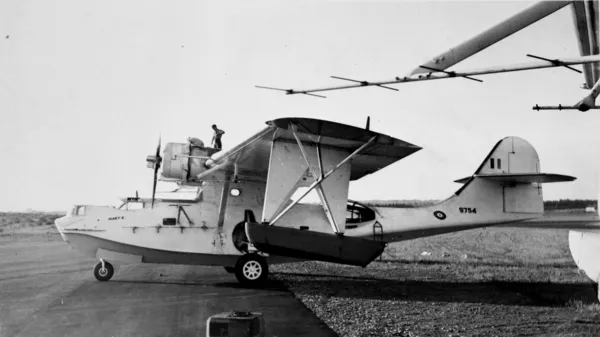
The Consolidated Catalina and Canso were close cousins. The Canso was the true amphibious version of the design and therefore included a conventional undercarriage to allow for either water or land use. The Canso provided more than two decades of valuable service to the RCAF. The Catalina variant came first and was produced beginning in 1935 for the United States Navy. The amphibious version, designated PBY-5A, came in service early in 1941 and the RCAF began using the aircraft on anti-submarine patrols that same year. After the Second World War, the RCAF used Cansos for search and rescue, Arctic survey missions and various transport operations. RCAF
Aircraft Images
Canso 9754
Canso A 9754
 P
PAccepted at the Boeing Canada factory by No. 13 Aircraft Inspection Detachment. Held by this unit pending completion of radio installation. To Eastern Air Command on 3 March 1943. Carried name "Mary K" on nose, without squadron codes, date unknown. Coded "P" of No. 162 (Bomber Reconnaissance) Squadron, RAF Wick, Scotland.
On 24 June 1944, with Flight Lieutenant D.E. Hornell and crew, sank U-1225 at 63-00N 00-50W. U-boat was sited at 19:00, one engine shot off during attack but aircraft pressed on and dropped several depth charges around the sub. As a result of AA fire from the U-boat, the Canso was on fire and had to ditch. The crew spent 21 hours in the water with one dinghy. Two members died before they were rescued. Flight Lieutenant Hornell died shortly after rescue and was posthumously awarded the Victoria Cross "for inspiring leadership, valoUr and devotion to duty". Note that the Canso displayed at the Canadian Warplane Heritage Museum in Hamilton with this serial is actually ex C-FPQL, ex RCAF 11084.
1943-02-05 Taken on Strength 2019-08-20
1944-June-24 Accident: 162 Squadron Loc: North Atlantic Names: Bodnoff | Campbell | Cole | Denomy | Hornell | Matheson | Scott | St Laurent
1944-08-03 Struck off Strength Struck off, after being lost on 24 June 1944, see comments. 2019-08-20
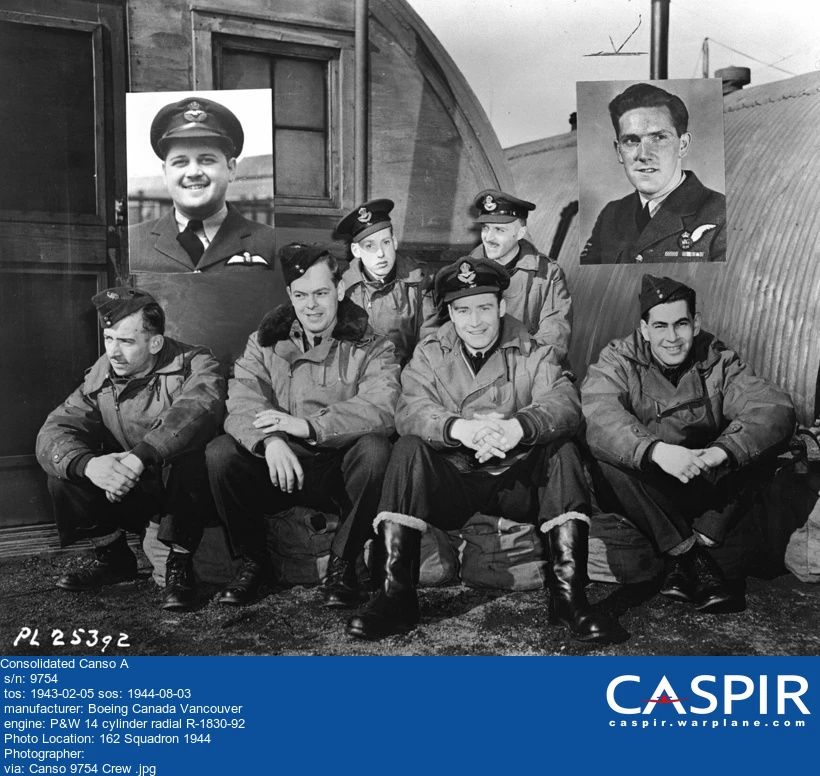


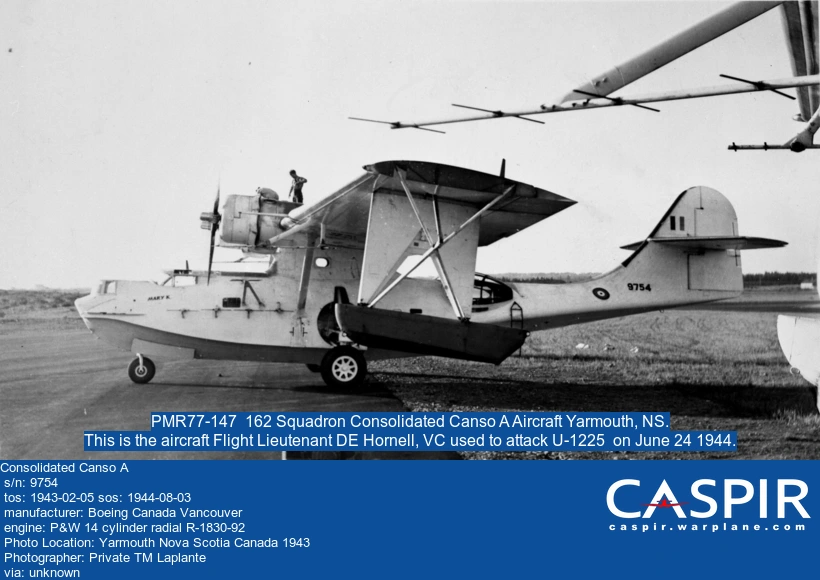
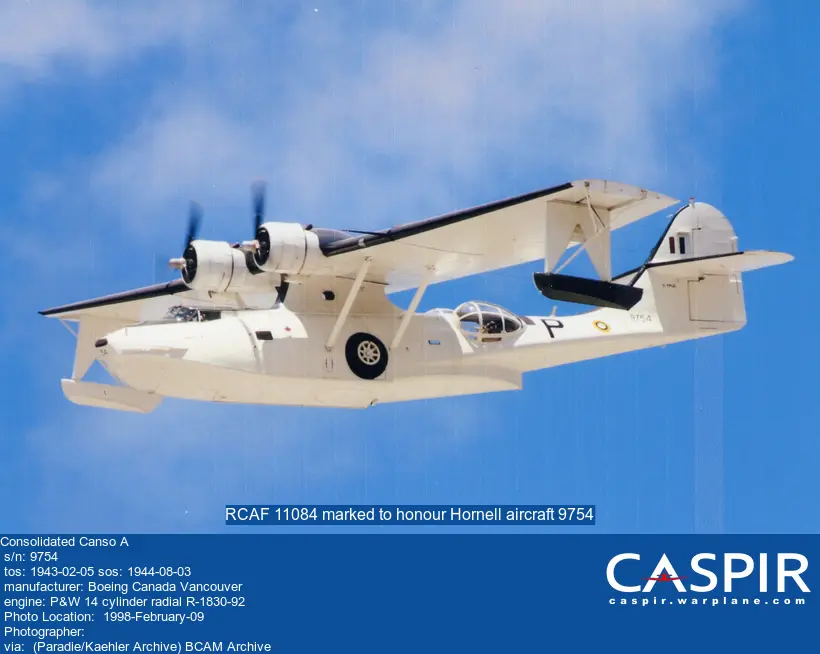
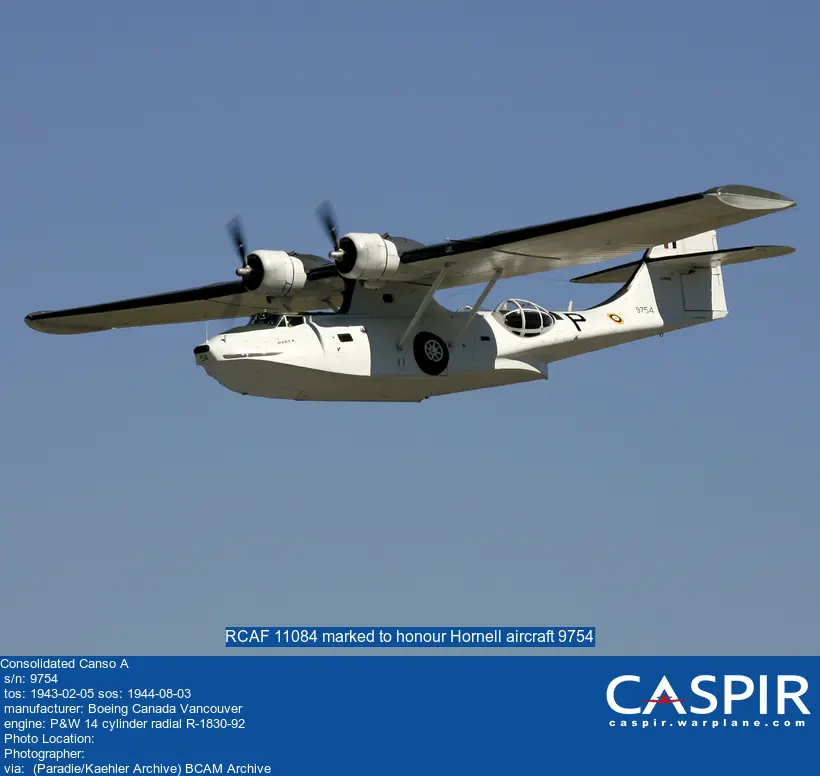
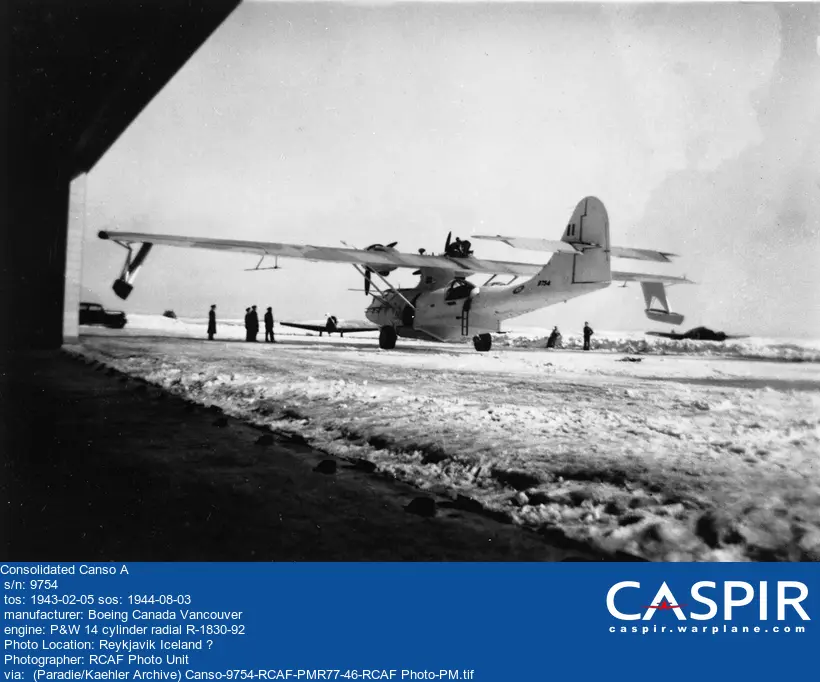
Unit Desciption
162 (BR) Sqn Sectabimur Usque Per Ima ()
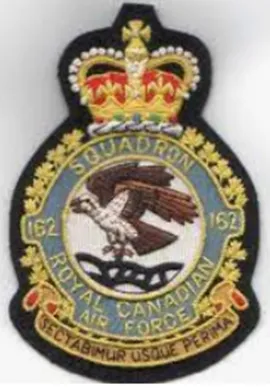
The squadron was formed as a Bomber Reconnaissance unit at Yarmouth, NS on 19 May 1942, flying Consolidated Canso A aircraft. The squadron remained at Yarmouth until January 1944 in uneventful anti-submarine duty. In January 1944 it was lent to RAF Coastal Command and operated from Reykjavik, Iceland until 13 June 1945. One U-boat was destroyed by aircraft from Reykjavik. During part of 1944 the squadron operated from Wick, Scotland, and found success by destroying 4 German U-boats and sharing in the destruction of a fifth. During one of these engagements, with U-1225, Flight Lieutenant D.E. Hornell and crew sank the U-boat but their aircraft was forced to ditch as a result of anti-aircraft fire from the submarine. The crew spent 21 hours in a single dinghy. 2 of the crew died, and Hornell himself died shortly after his rescue. He was posthumously awarded the Victoria Cross for his inspirational leadership and devotion to duty.
Details of the U-boat sinkings were as follows. On 17 April 1944 Flying Officer T.C. Cooke and crew in Canso 9767 “S†flying from Iceland sank U-342; on 3 June 1944 Flight Lieutenant R.E. McBride and crew in Canso 9816 “T†flying from Wick sank U-477 in the face of intense return gunfire; on 11 June, 1944 Flying Officer L. Sherman and crew in Canso 9842 “B†flying from Wick sank U-980; on 13 June 1944 Wing Commander C.G.W Chapman and crew in Canso 9816 “T†flying from Wick sank U-715 although their aircraft was shot down and the crew had to take to their life rafts with the loss of one of their number (Chapman was awarded the squadron’s first DSO); on 24 June 1944, Flight Lieutenant D.E. Hornell and crew in Canso 9754 “P†sank U-1225 (see above); on 30 June 1944 Flight Lieutenant R.E. McBride and crew in Canso 9841 “A†flying from Wick damaged U-478 which was later finished off by an RAF 86 Sqn Liberator; on 4 August 1944 Flying Officer W.O. Marshall and crew in Canso 9759 “W†flying from Wick damaged U-300.
In the course of WWII, the squadron flew 2100 sorties for 22, 600 operational hours. 6 aircraft were lost, and 34 aircrew, of whom 17 were killed and 17 missing. Squadron members were awarded 1 VC, 2 DSO's, 2 MBE's, 16 DFC's, 3 AFC's, 4 DFM's, 1 BEM and 21 Mid's. The squadron returned to Canada on 14 June 1945 and was disbanded at Sydney, NS on 7 August 1945.
Maps for Movements of 162 Squadron 1942-45
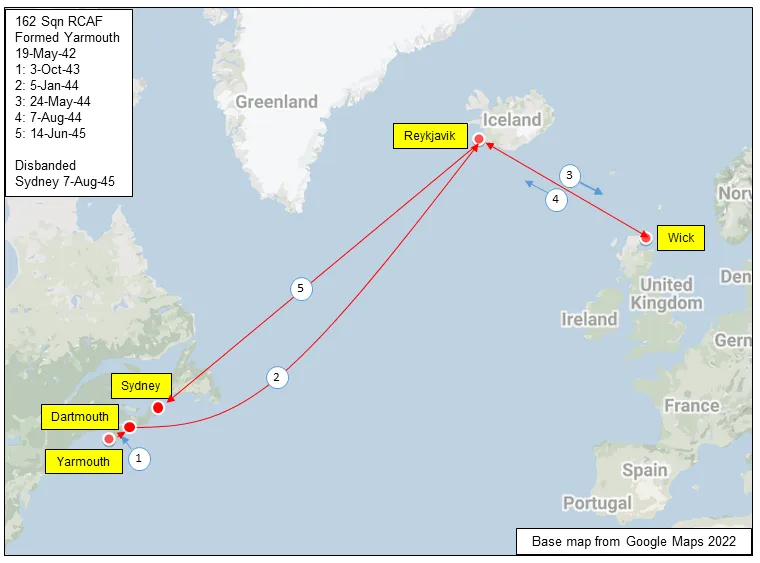
MAP 1: 162 Squadron Movements 1942-45 (right-click on image to display enlarged in new tab)
|
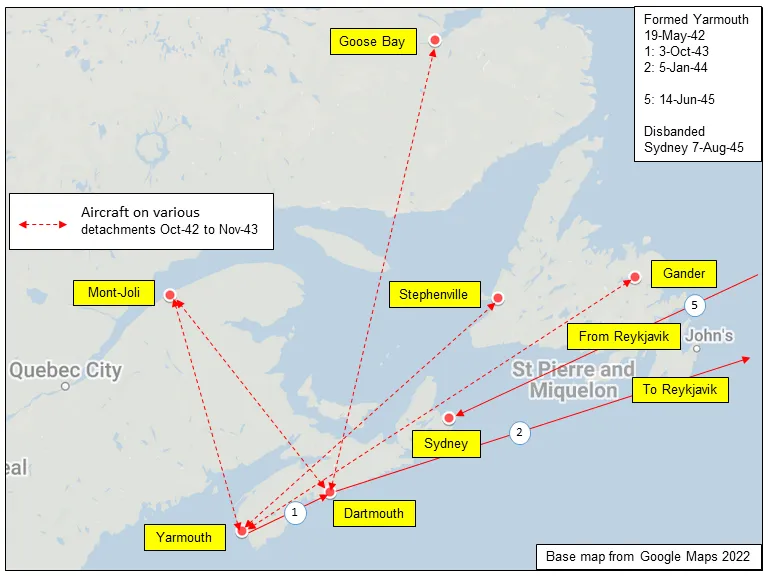
MAP 2: 162 Squadron Movements Eastern Canada 1942-44
|
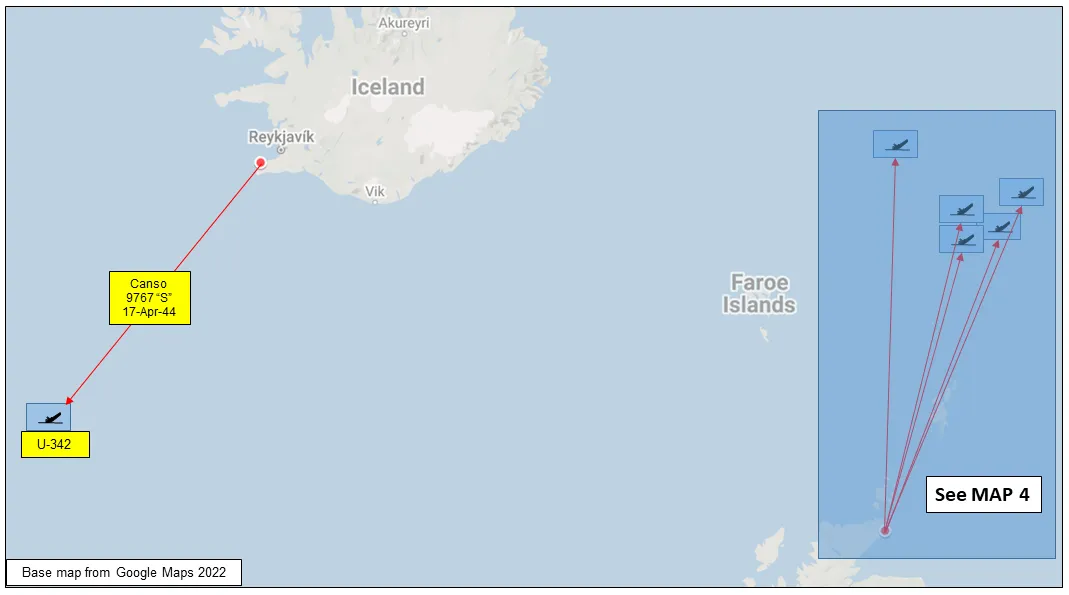
MAP 3: Sinking of U-342
|
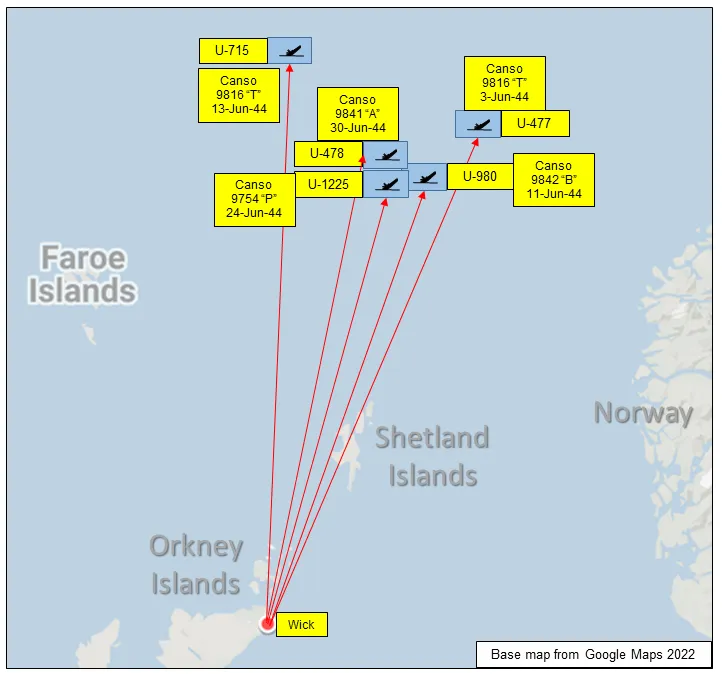
MAP 4: U-boat sinkings from Wick
|
162 Squadron History Summary 1942-45
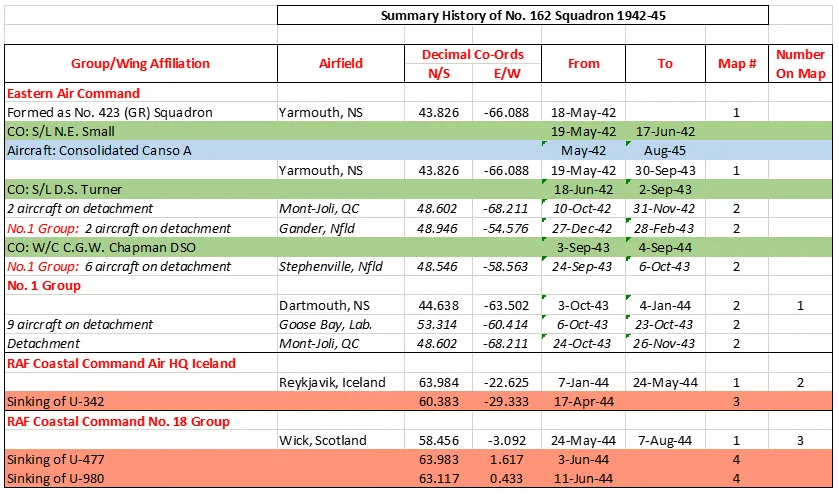
162 Squadron History Summary 1942-45 Page 2

